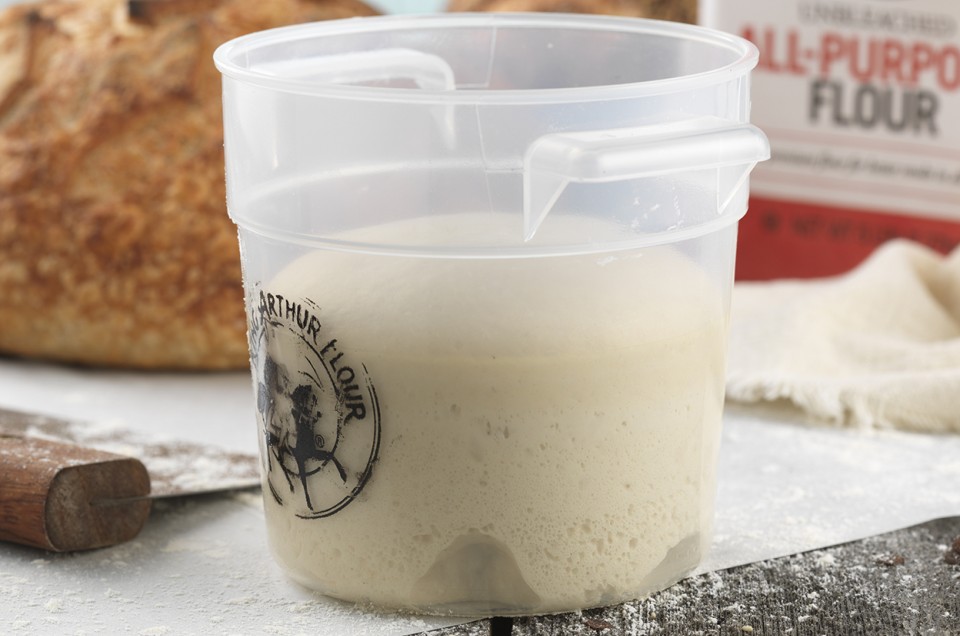Stiff Sourdough Starter
This dough-like stiff starter has double the amount of flour as the typical liquid starter, which is equal parts water and flour. Use it in our recipe for Artisan Sourdough Bread.

This dough-like stiff starter has double the amount of flour as the typical liquid starter, which is equal parts water and flour. Use it in our recipe for Artisan Sourdough Bread.

For the first feeding: Mix the liquid starter and flour together in a bowl until the dough becomes a shaggy mass. Knead until the dough becomes smooth and firm and there are no dry spots. You may need to add an extra tablespoon or two of flour if the dough feels very sticky.
Place the starter in an oiled container with the lid on and allow it to ferment at room temperature for approximately 8 hours.
For the second feeding: Tear the stiff starter into pieces, and place 1/4 cup (57g) of it in a bowl. Add the water and flour. Mix and then knead to make a firm, smooth dough, with no dry pockets of flour. This should only take a few minutes.
Place the starter in a bowl, and cover the bowl with plastic.
Allow the starter to ferment for approximately 8 hours, or until it's doubled in size and domed, with the center just beginning to recede. This mature or "fed" stiff starter is now ready to use in your recipe.
If you plan to maintain your stiff starter but aren't going to bake with it immediately, let it ferment at room temperature for 2 hours (instead of the 8 hours mentioned in step #5), then refrigerate.
Popular in recipes
Popular in products

